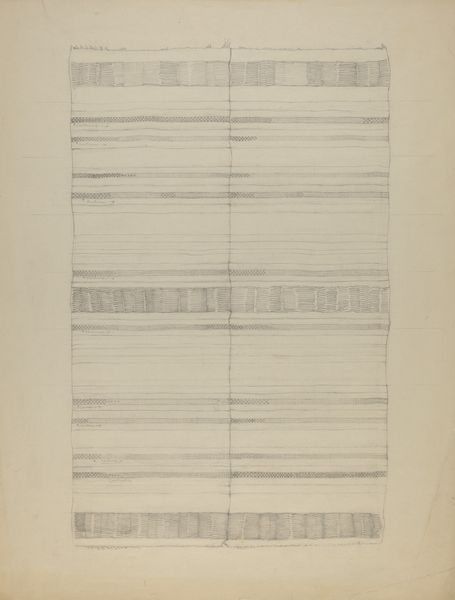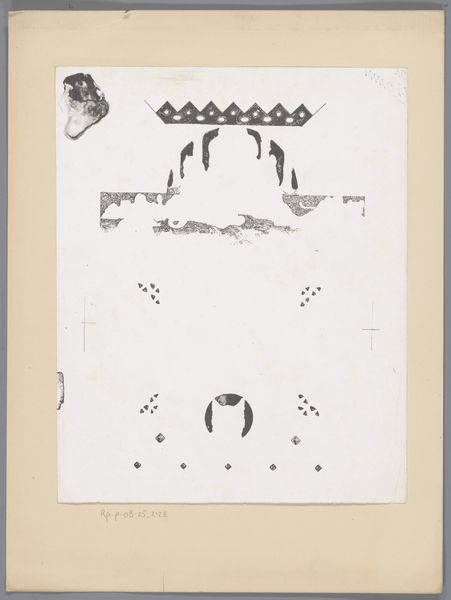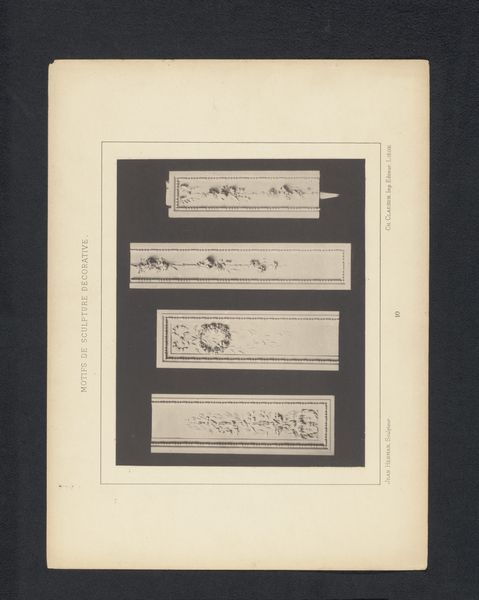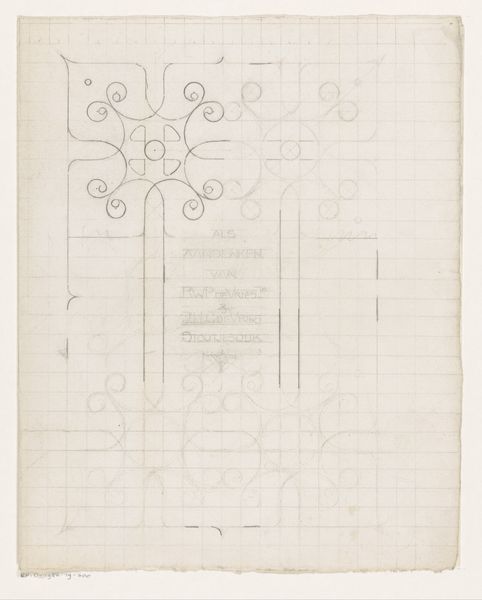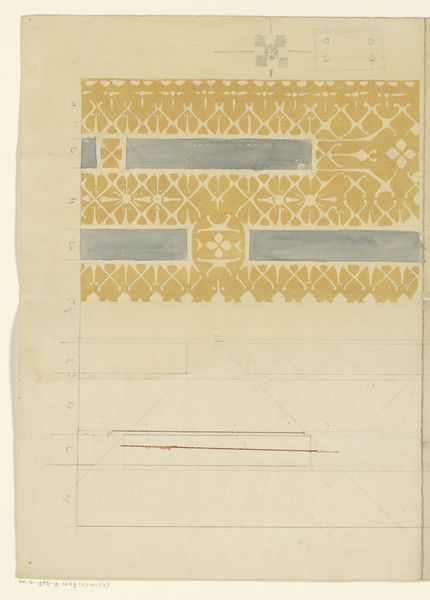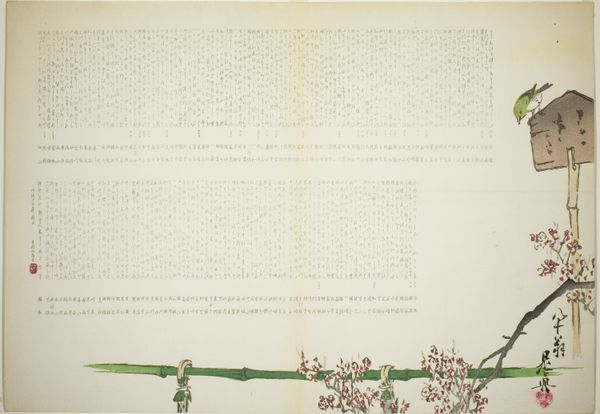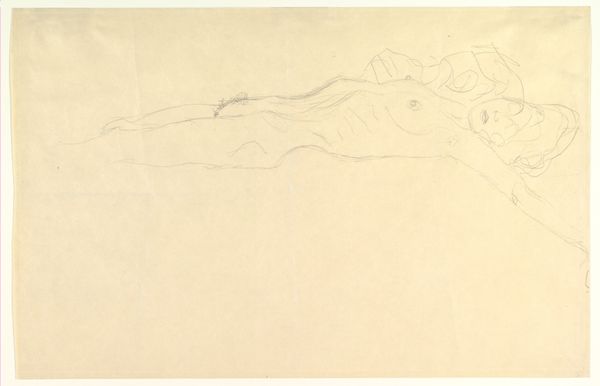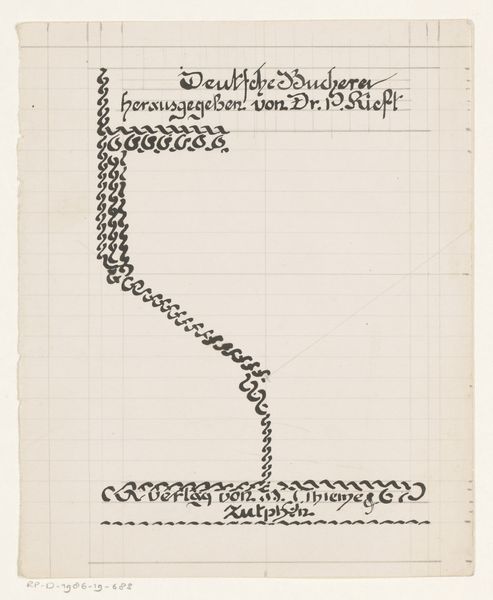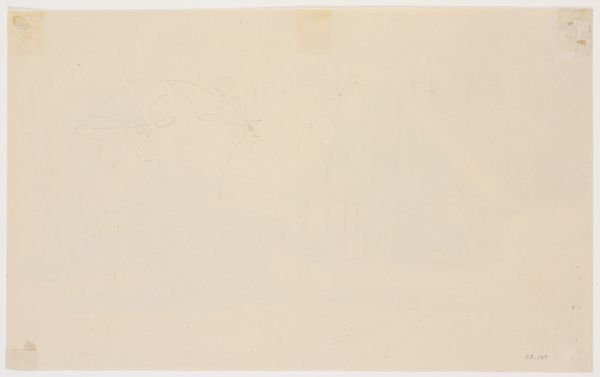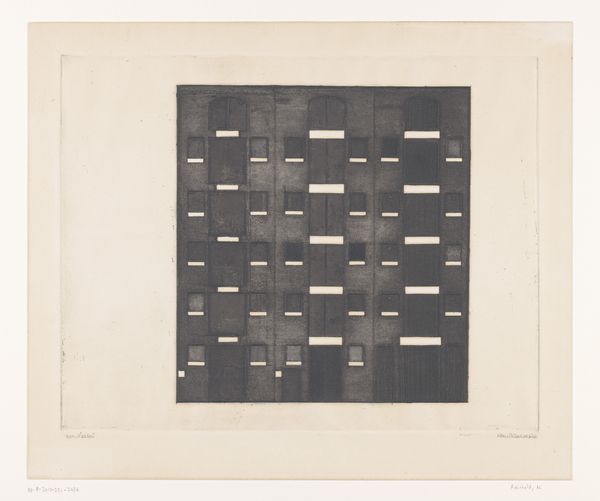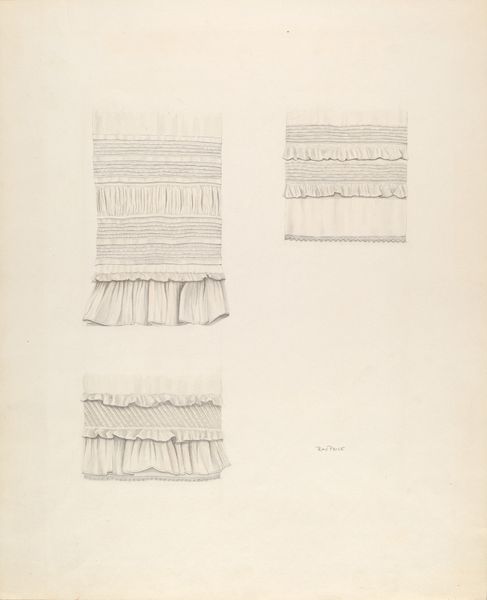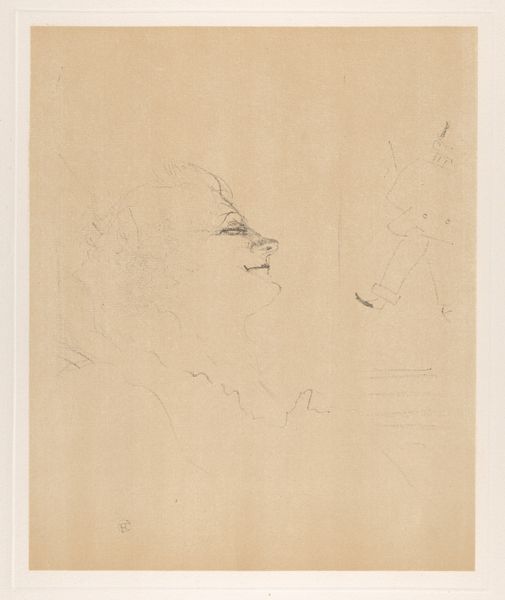
Drie profielen met daarnaast aanzichten van de reliëfversieringen c. 1835 - 1860
0:00
0:00
drawing, paper, pencil
#
drawing
#
neoclacissism
#
paper
#
geometric
#
pencil
#
academic-art
Dimensions: height 637 mm, width 476 mm
Copyright: Rijks Museum: Open Domain
Curator: Welcome! Today, we’re looking at "Drie profielen met daarnaast aanzichten van de reliëfversieringen", or “Three Profiles with Views of Relief Decorations," a drawing from around 1835-1860 by Franz Jakob Kreuter. It’s meticulously rendered in pencil on paper. What strikes you first about it? Editor: Immediately, it's the coolness of it, the graphic clarity. The lines are so precise and ordered. I notice a very subdued palette, restricted to delicate shades of grey with hints of pale pink. It lends the piece a strong sense of restrained elegance. Curator: Absolutely. Kreuter's drawing speaks to a renewed interest in classical antiquity that defined Neoclassicism. These architectural details weren’t just decorations. They were visual statements meant to evoke the perceived grandeur and order of past empires. Editor: I see the repetition and symmetry reinforce that sense of order you describe. Each frieze exhibits balanced design with clear geometric components and organic motifs carefully integrated to promote a balanced overall pattern. The light color reinforces the rational tone of Neoclassicism Curator: That’s an excellent point about the interplay between rationality and idealization. Neoclassicism became intertwined with expressions of state authority and cultural identity, especially through architecture during this period. Structures of governance used classical elements to evoke an aura of permanence. Editor: The stark contrasts with its period precursors. It suggests this drawing existed purely as an aesthetic study, rather than an expressive exploration, an idea that very much aligns with a formalist sensibility Curator: Though created for different goals than artwork made previously, Kreuter's artwork can reflect political needs and aspirations of the era. By documenting and potentially inspiring neoclassical designs, Kreuter contributed to shaping architectural ideals and public aesthetics Editor: Indeed, each profile possesses a distinct rhythmic quality. Notice how the interplay of lines and forms draws the eye, encouraging exploration. And that repetition, almost hypnotic, suggesting some intrinsic appeal irrespective of historical weight. Curator: Well, in considering this piece through history and form, hopefully listeners can see it’s just a glimpse into the ongoing dance between power, aesthetics, and visual culture. Editor: Yes, understanding that it may not speak only about aesthetic expression but reveals larger contexts in this case allows us appreciate the beauty on a number of dimensions.
Comments
No comments
Be the first to comment and join the conversation on the ultimate creative platform.

